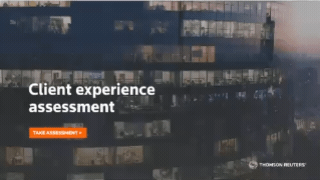Collaboration is an essential part of any successful business. With the right strategies in place, the ability to collaborate with clients can be more efficient and effective.
Below are five tips to better collaborate with clients:
Tip 1: Keep communications simple and secure
Establishing secure and simple communication between you and your clients is essential for successful collaboration. Some ways to do this include:
Setting clear expectations:
Before starting a project with your client, it is important that you set clear expectations from the outset to avoid any confusion later. Make sure to discuss details such as project timelines, deadlines and deliverables, so both parties have the same understanding before beginning work together.
Scheduling regular check-ins:
Checking in with your clients regularly helps build trust by showing that you care about their progress as much as they do. This communication will also help keep clients updated on any changes that have been made, as well as allowing them to provide feedback or ask questions if needed.
Tip 2: Increase transparency
Transparency creates a successful environment to collaborate with your clients. Clients need to know they can trust the people they’re working with. Being transparent about the status of their matters will help to strengthen relationships.
To create a trusting relationship with your legal clients, you must provide them with clear insight into the status of their matters, task allocation and financials at all times. You could also consider creating visual representations or reports that outline timelines for task completion and other key dates.
In addition, open dialogue between both parties will help create an atmosphere of collaboration rather than simply one-way information sharing, which is often necessary, but not always beneficial in terms of trust-building.
Creating an environment of transparency where both parties feel comfortable communicating openly makes it easier for lawyers and clients alike to collaborate more effectively – leading to better outcomes for everyone involved.
 |
Tip 3: Use a unified workspace
Flexibility is another key to better client-attorney relationships. By creating a unified workspace where real-time editing, tracking and discussion can take place, lawyers can benefit from increased efficiency and productivity. This type of collaboration eliminates the need for back-and-forth emails or calls, allowing for quicker response times, more accurate information sharing, and more meaningful conversations.
To achieve this type of collaboration, legal professionals should look into employing cloud-based software solutions that provide easy access for both parties involved in the matter. These solutions make it easier for attorneys and their clients to work together in real-time by providing an online platform that allows them to access all related documents.
|
Moreover, having a unified workspace also makes it easy for attorneys to keep track of all communications with their clients as well as review past conversations when needed. It removes the need to search through emails or call logs to locate any missing information. This saves lawyers valuable time, while guaranteeing that they remain organized and on top of their cases at all times.
Tip 4: Expand knowledge and share expertise by providing personalized services
When attorneys can provide personalized services and act as both a legal and business advisor, they can share knowledge and expertise that will help the client achieve all goals. This includes offering advice on not just the legal aspects of a case, but also the business implications.
By expanding your knowledge base beyond your traditional scope of work, you are able to provide more comprehensive legal services. Additionally, you can offer customized solutions that are tailored to each client’s individual needs. By doing this, you are creating an atmosphere that helps foster long-term relationships.
To make sure that clients receive the most personalized service possible, you should take the time to understand all goals and objectives at the beginning.
You should also keep current on legal developments in all relevant fields so you can provide timely advice on emerging issues that may affect a client’s case or business.
Finally, attorneys should strive to stay ahead of the technology curve to take advantage of innovative tools available for streamlining collaboration processes between themselves and their clients. By staying up to date with technological advancements, attorneys can improve the overall quality of their services while creating an environment where both parties benefit from better communication and increased productivity.
Tip 5: Increase mobility
The ability to access data, updates and communicate from any device or location is crucial in today’s working environment. With the rise of mobile technology, legal professionals can now access their documents and communications from anywhere. This makes it easier to provide services to clients who may not be available in person or during regular office hours.
The benefits of increased mobility extend beyond convenience. It can also reduce costs associated with travel expenses such as airfare and lodging fees. Additionally, attorneys need not worry about taking physical copies of documents or other materials when traveling as they can easily access them via the cloud when needed.
Bonus tip: increased mobility should not equal an unbalanced work/life schedule
With the rise of remote work and mobile technology, it can also be difficult to set boundaries between your personal and professional life. Setting boundaries between personal and professional life is essential for maintaining a healthy work/life balance. Knowing when to log off from work and focus on personal interests is key to avoiding burnout and guaranteeing that work does not encroach on other aspects of your life. By creating and consistently adhering to healthy boundaries between personal and professional life, one can more easily enjoy the benefits of both.
Overall, the ability to collaborate with clients from the office, from home or on the train has revolutionized how lawyers do business today and is only continuing to evolve.
What is one tool to better collaborate with legal customers?
Client portals are becoming increasingly popular among law firms as a way to collaborate with clients. Client portals provide a secure platform where attorneys can store documents, communicate with clients, and track progress on legal matters.
 |












